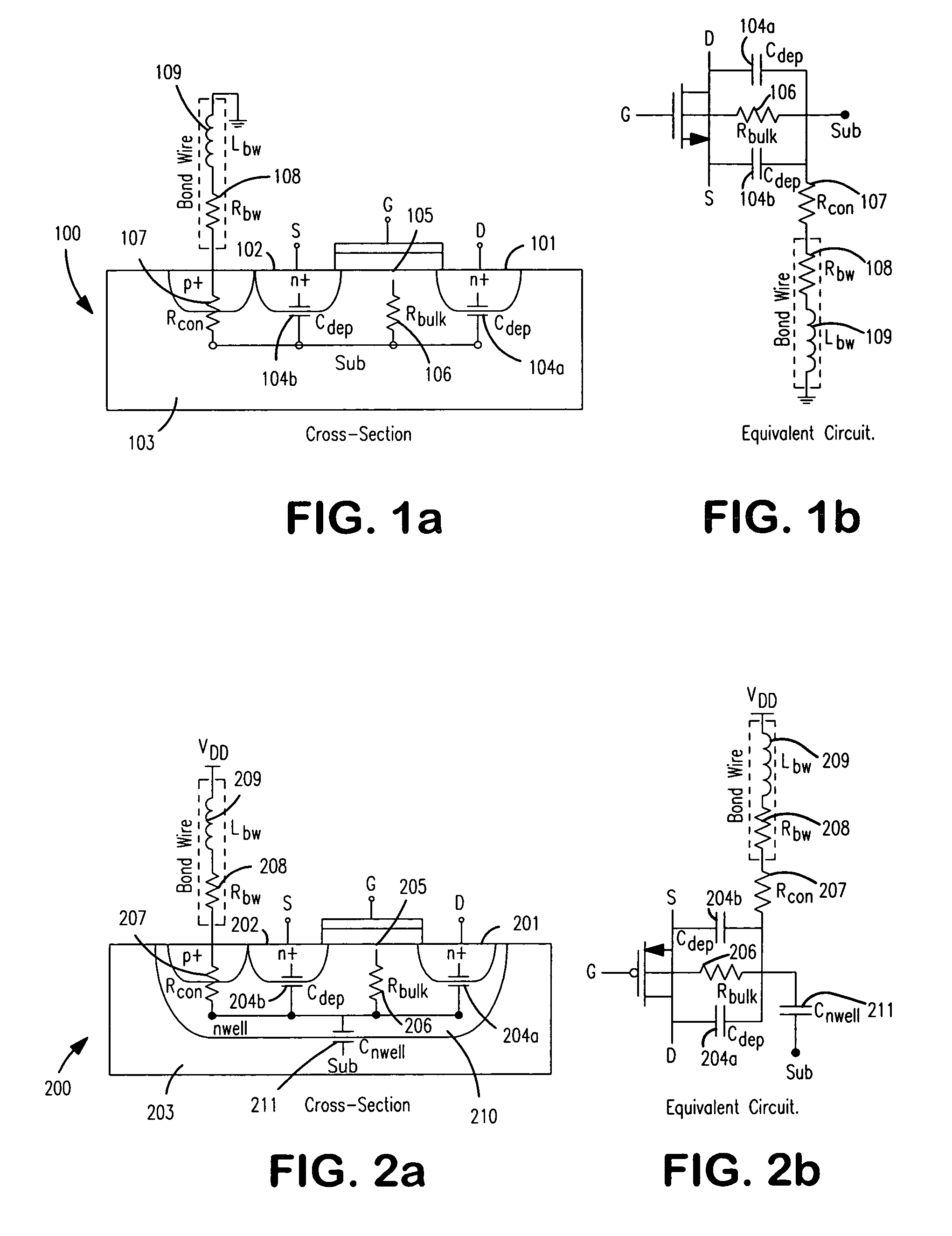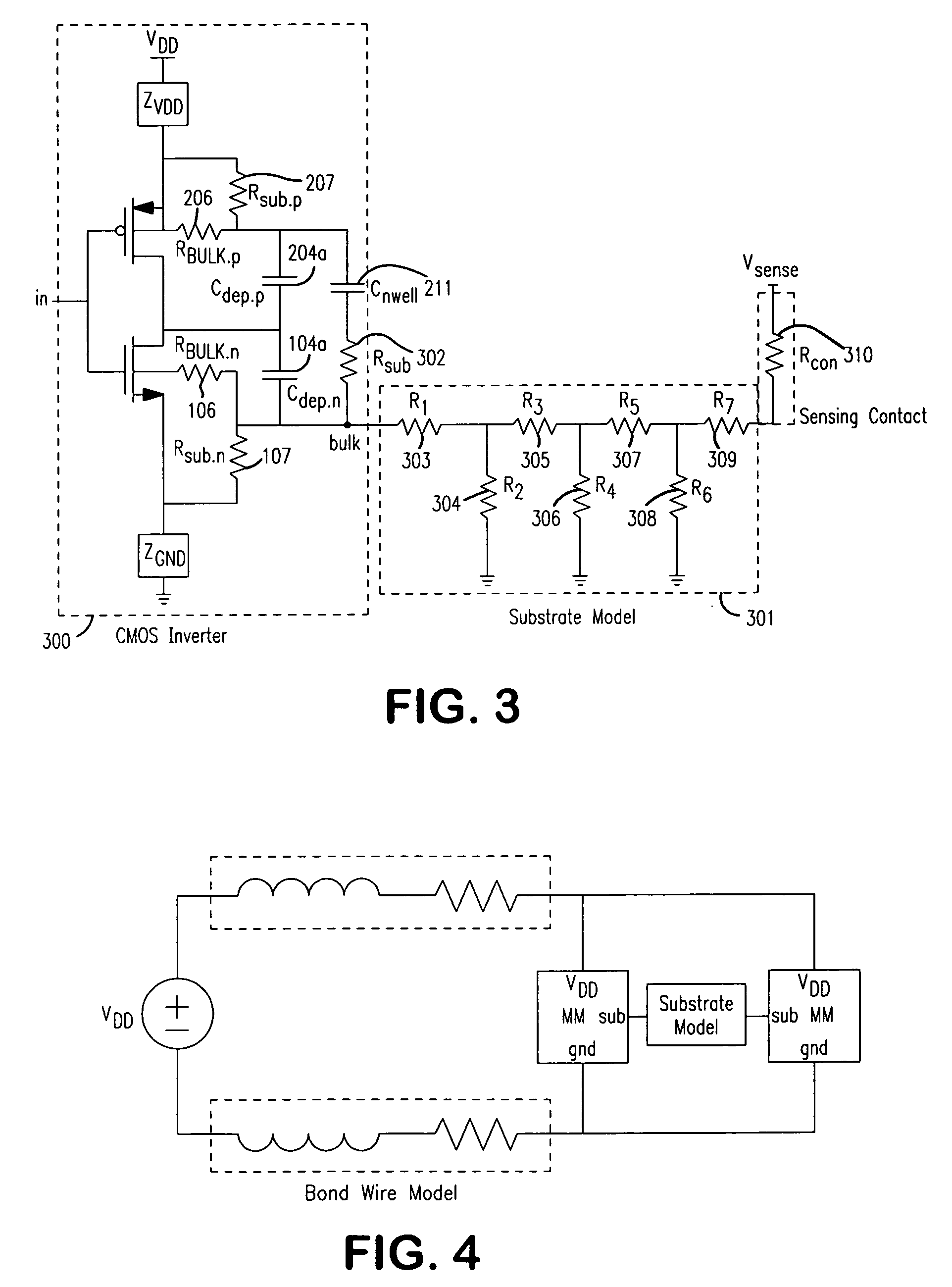Substrate noise tool
a tool and substrate technology, applied in the field of substrate noise tools, can solve the problems of too late, the performance of sensitive analog circuits can be severely degraded, and the problem of substrate noise is more and more pronounced, so as to achieve fast simulation, accurate representation of substrate noise, and the effect of reducing noise coupling
- Summary
- Abstract
- Description
- Claims
- Application Information
AI Technical Summary
Benefits of technology
Problems solved by technology
Method used
Image
Examples
Embodiment Construction
[0050]FIG. 5 illustrates a high-level block diagram showing the operation of the software program, which is written in Perl, although other computer languages are within the scope of the invention.
[0051]The software program requires several sets of input information: circuit information 400, technology information 401, an event model 402, optionally a substrate model 404, and optionally information concerning the isolation structures 405. Using the first two sets of information, the software program decomposes the circuit into equivalent noise macromodels 403. The noise macromodels together with the event model 402 for each node in the circuit are used to construct the noise signature 406. This noise signature 406 is then simulated with the substrate model 404 and power grid / isolation structures 405 to compute the substrate noise profile. The outputs 407 are a time domain representation and noise spectrum. Each of these components is described in more detail below.
[0052]As shown in ...
PUM
 Login to View More
Login to View More Abstract
Description
Claims
Application Information
 Login to View More
Login to View More - R&D
- Intellectual Property
- Life Sciences
- Materials
- Tech Scout
- Unparalleled Data Quality
- Higher Quality Content
- 60% Fewer Hallucinations
Browse by: Latest US Patents, China's latest patents, Technical Efficacy Thesaurus, Application Domain, Technology Topic, Popular Technical Reports.
© 2025 PatSnap. All rights reserved.Legal|Privacy policy|Modern Slavery Act Transparency Statement|Sitemap|About US| Contact US: help@patsnap.com



